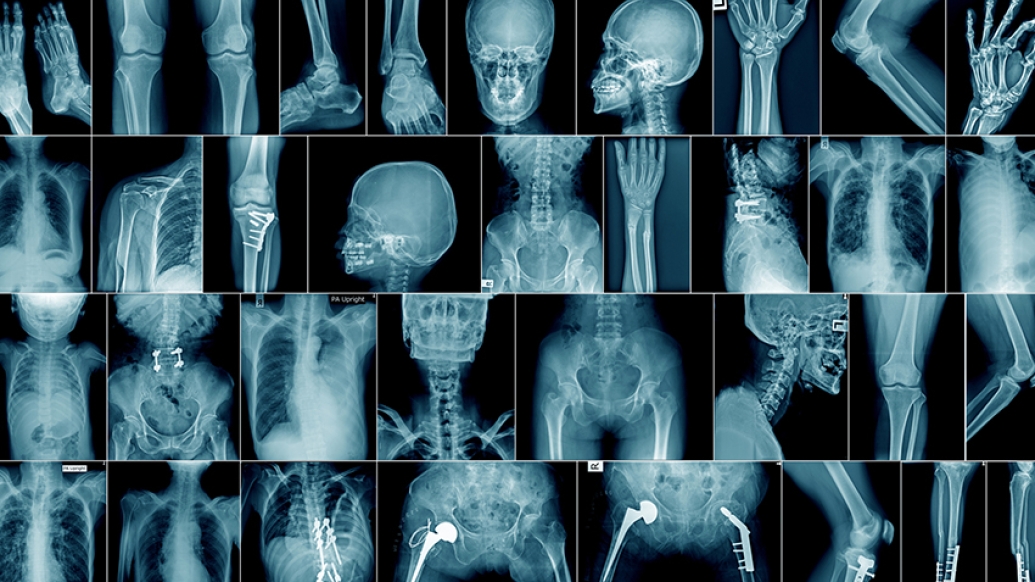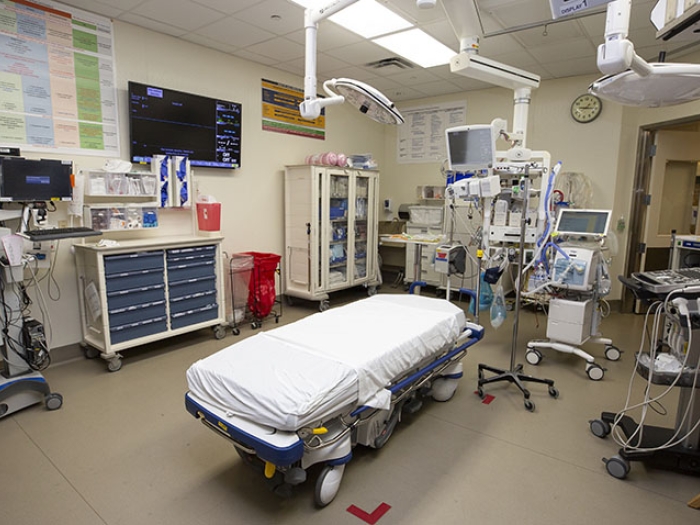A new study finds there’s excessive imaging testing being performed in the emergency department. A reduction could save millions in health care costs.
8:00 AM
Author |

An emergency department is sometimes the first place a person thinks to go for health care.
"The emergency department is an essential care setting, treating over 145 million annual visits in the United States across a wide range of patient populations, from children to adults," says Keith Kocher, M.D., MPH, an assistant professor of emergency medicine at Michigan Medicine.
LISTEN UP: Add the new Michigan Medicine News Break to your Alexa-enabled device, or subscribe to our daily audio updates on iTunes, Google Play and Stitcher.
This translates to about $3.8 million annually in avoidable spending on low-value care.Keith Kocher, M.D., MPH
It's for this very reason that Michele Nypaver, M.D., a professor of emergency medicine and pediatrics at Michigan Medicine and University of Michigan C.S. Mott Children's Hospital, says the emergency department setting represents the ideal venue to implement practice improvement efforts to ensure high-quality care, informed by the best available evidence.
Kocher and Nypaver are the program directors of the Michigan Emergency Department Improvement Collaborative (MEDIC), a physician-led statewide quality network connecting a diverse set of unaffiliated emergency departments with the goal of improving quality and reducing low-value emergency care throughout Michigan.
The collaborative is funded by Blue Cross Blue Shield of Michigan and Blue Care Network through the Value Partnerships program.
SEE ALSO: Researchers: 'Choosing Wisely' Off to a Strong Start, but It's Time to Evolve
In a new study, published in Annals of Emergency Medicine, Kocher, Nypaver and a team of emergency physician MEDIC clinical champions from hospitals and health systems across Michigan use data from MEDIC to highlight opportunities to safely reduce overtesting in emergency departments.
"Health care is changing," says Kocher, a member of the U-M Institute for Healthcare Policy and Innovation. "Government, insurance companies, advocacy groups and patients are all more interested than ever in demonstrating the value of care delivered."
He adds, "This requires a better understanding of the outcomes we get for the tests and treatment we perform."
Overimaging costs
MEDIC warehouses a clinical registry that contains data on more than 1 million emergency department visits from 16 diverse emergency departments. It also includes data on performance across four quality measures for each department.
In the study, the research team examined data from the clinical registry, specifically looking at amounts of performed imaging. Estimates of excess imaging were calculated based on the Achievable Benchmark of Care method for determining quality improvement targets across a population.
In 2017 alone across the collaborative, the team found substantial variation in amounts of performed imaging and the potential to avoid 1,519 head CT scans for minor head injury, 3,308 chest X-rays for children with asthma, bronchiolitis or croup, and 4,254 CT scans for suspected pulmonary embolism.
MORE FROM MICHIGAN: Sign up for our weekly newsletter
"This translates to about $3.8 million annually in avoidable spending on low-value care if these MEDIC sites were to collectively improve to the benchmark standard," Kocher says.
"We show that there is the opportunity to avoid low-value imaging tests in the emergency department and, in turn, create significant health care savings."
Kocher, Nypaver and team hope these study results show the benefit and power a collaborative can have for fellow physicians.
"Useful insight into how we continuously improve the quality of care we deliver only comes from getting meaningful, credible data into the hands of those who can best act on it — and oftentimes that means clinicians," Nypaver says.
"MEDIC is a tool that allows emergency physicians to get actionable feedback on how they are performing on their patients in their own emergency departments, with the collaborative helping us to learn from each other to keep improving."
Future implications for payments
Kocher and Nypaver note that measurement standards for patient care are increasingly tied to reimbursement, termed "pay for performance."
"Unfortunately these measures are often initiated and implemented without the direct input of the physicians they impact," Kocher says.
"It is critical that emergency physicians bridge this gap and participate in shaping how and in what form the quality of our care is measured and how it will positively impact our patients, or it will likely be determined for us by those outside of our specialty."
He says MEDIC's learning collaborative approach provides an important model for large-scale clinical practice change demonstrating the benefits of partnerships among physicians, hospitals and payers.
Nypaver adds, "MEDIC will continue to identify challenges in emergency medicine where strong evidence exists to define best practice, where opportunity exists to improve patient outcomes and where emergency physicians are best positioned to intervene."
MEDIC participating partners include: Beaumont Health, Royal Oak, Troy and Farmington Hills Hospitals; Detroit Medical Center, Children's Hospital of Michigan, Detroit Receiving, Huron Valley-Sinai and Sinai-Grace Hospitals; Henry Ford Hospital, Detroit; Holland Hospital, Holland; Hurley Medical Center, Flint; Lakeland Medical Center, St. Joseph; Michigan Medicine, Ann Arbor; MidMichigan Medical Center, Midland; Munson Medical Center, Traverse City; and St. Joseph Mercy Hospital, Ann Arbor and Livingston.
MEDIC continues to grow and recruit additional emergency departments in Michigan and welcomes those that share its vision of collaborative quality improvement to join. For more information, please visit the MEDIC website.

Explore a variety of health care news & stories by visiting the Health Lab home page for more articles.

Department of Communication at Michigan Medicine
Want top health & research news weekly? Sign up for Health Lab’s newsletters today!





